Kashmir attack: What's behind the deadliest militant raid in years?
- Published

Indian military officials were quick to blame Pakistan-based militants
The deadliest militant attack on Indian security forces in disputed Kashmir for years has raised new tensions between India and Pakistan. The countries have been locked in a dispute over the Himalayan region since gaining independence from Britain in 1947.
What just happened?
On Sunday, heavily-armed militants stormed an army base in Indian-administered Kashmir near the Line of Control (LoC) with territory administered by Pakistan, killing 17 soldiers. The four gunmen were killed after a gunfight, the Indian army said.
Indian army officials told reporters the attack at the brigade headquarters in Uri looks to have been the work of Pakistan-based militant group Jaish-e-Mohammed.
Pakistan's Foreign Office denied the claim, saying India often blames Pakistan-based groups without providing evidence. No group has said it carried out the deadly raid.
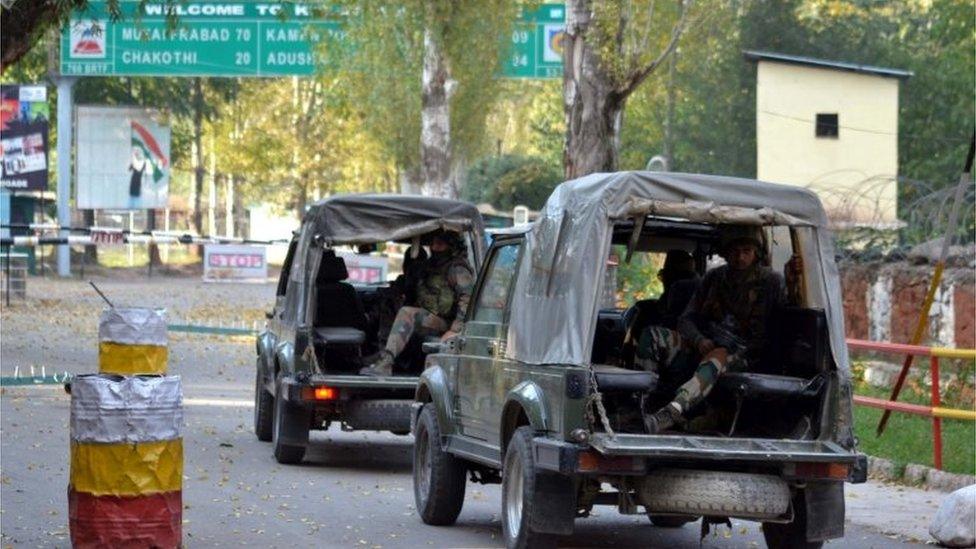
The incident has raised tensions at a time when Indian-administered Kashmir has already been in turmoil
The Line of Control, a de-facto border between the two countries separating Kashmir, is one of the most heavily militarised frontiers in the world and the incident has sparked fears of a military escalation.
So why now?
The incident has come at a time when Indian-administered, Muslim-majority Kashmir is already in the midst of some of the worst unrest seen in years.
In July, the killing of a 22-year-old militant, Burhan Wani, by government forces sparked mass protests and days of deadly violence.
The young militant built up a huge social media following made up of what many analysts have identified as a new a generation of disaffected young Kashmiris.
His strident calls for Kashmir to decide its own fate also resonated with a substantial part of the population that would like to see independence for the territory.
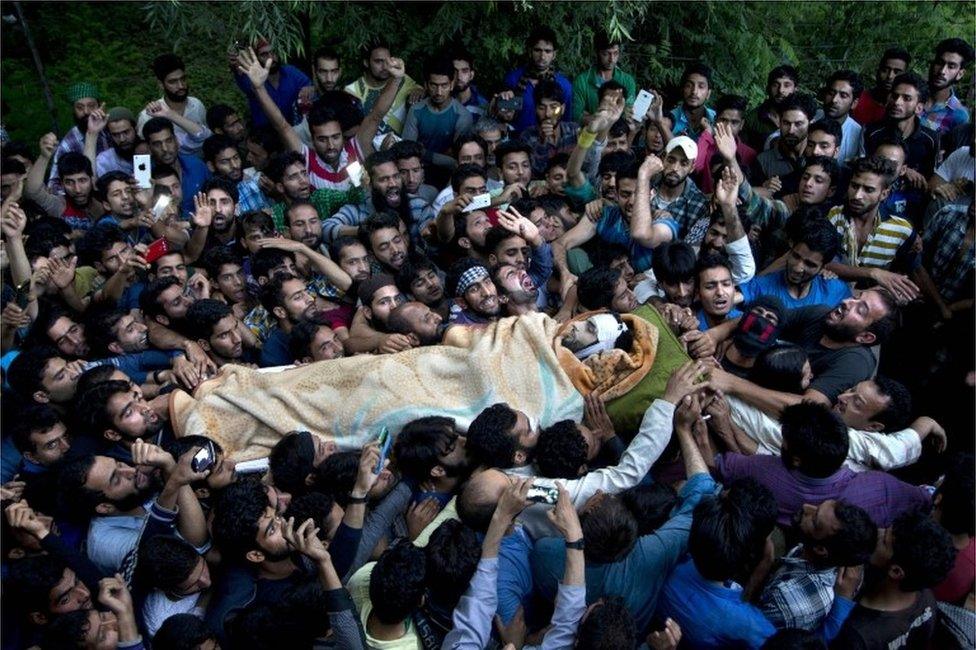
Kashmir has seen more than two months of protests since the death of Burhan Wani
After his death young people demonstrated on the streets, hurling stones at security forces - and police, in some cases, retaliated with pellet guns and rifles. More than 70 people have been killed - mostly civilians.

The recent unrest in Kashmir explained
Indian army's anger over Kashmir killings
Viewpoint: Living in the shadow of Kashmir
Viewpoint: Why mass funerals spark violence in Kashmir
Why July's Kashmir Killings could have been avoided
Concern over Kashmir police's pellet guns

The Indian army says that Wani was a militant who belonged to a terror group and incited the youth of Kashmir to violence. And some Kashmiris appeared to celebrate the Uri attack on social media, calling it a retaliation for the crackdown by police. Many others were horrified by the loss of life.
What is the danger?
The territorial dispute between the two countries has been running for decades, and two out of the three wars fought between the nuclear-armed rivals have been over Kashmir.
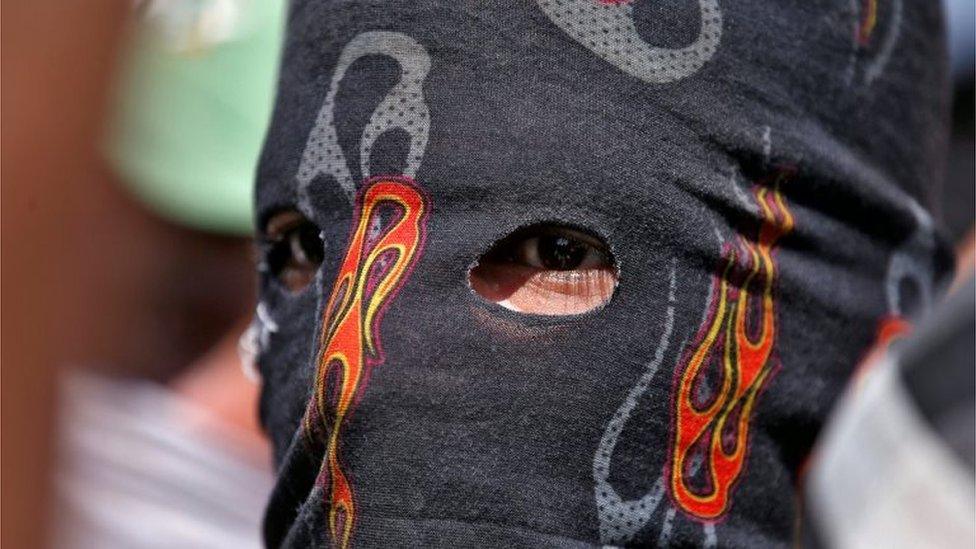
Many in Indian-administered Kashmir want independence in some form
There have been attempts at peace talks and better relations over the years, but they have often been thwarted by new attacks and old accusations.
A resolution has become more urgent in recent years after the rise of a separatist insurgency that began in earnest in 1989.
As with every stand-off in Kashmir, the fear of many is that this could eventually escalate into a major clash between two nuclear-armed states.
Most analysts believe that is unlikely to happen and that sporadic clashes and diplomatic sabre-rattling are likely to continue.
But a key question is, of course, what do Kashmiris want? With no sign of a solution forthcoming, many believe the action and anger on the streets of Kashmir could end up proving a tinderbox for conflict.
- Published18 September 2016
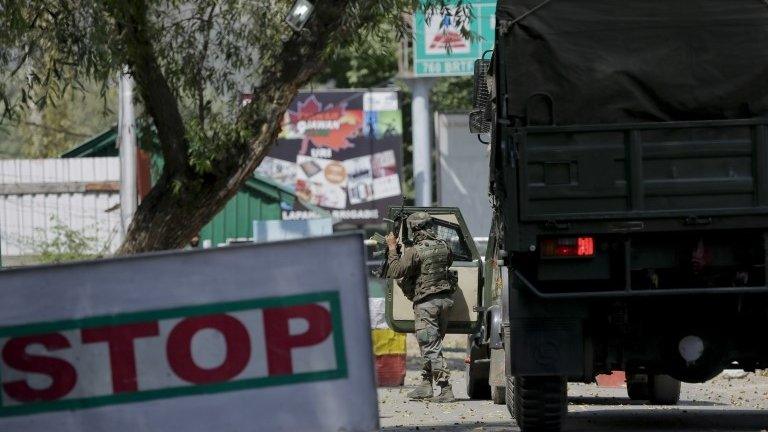
- Published17 September 2016
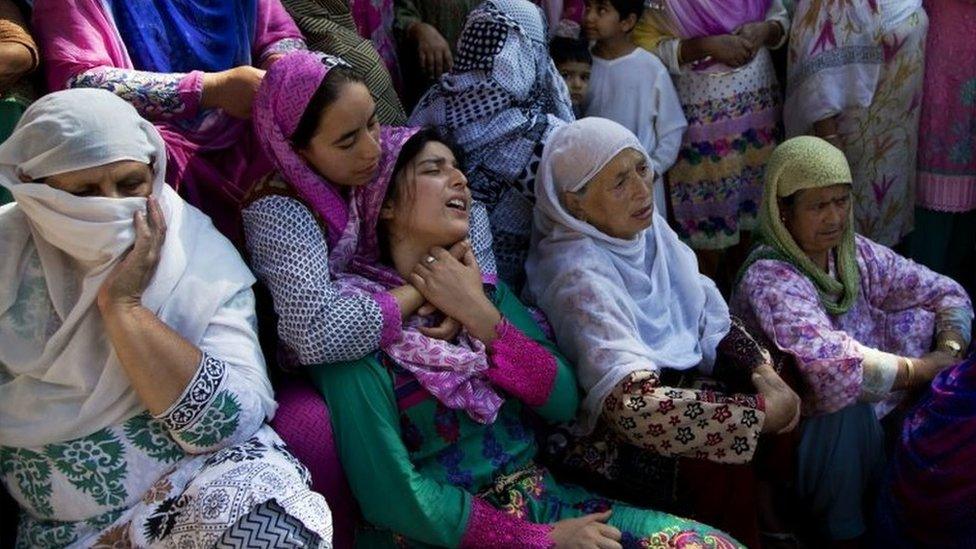
- Published5 September 2016
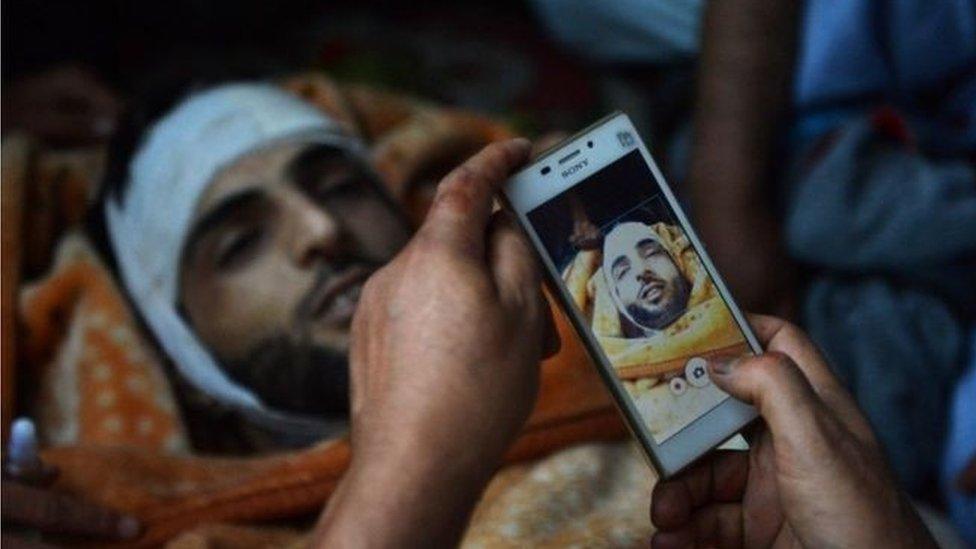
- Published5 September 2016
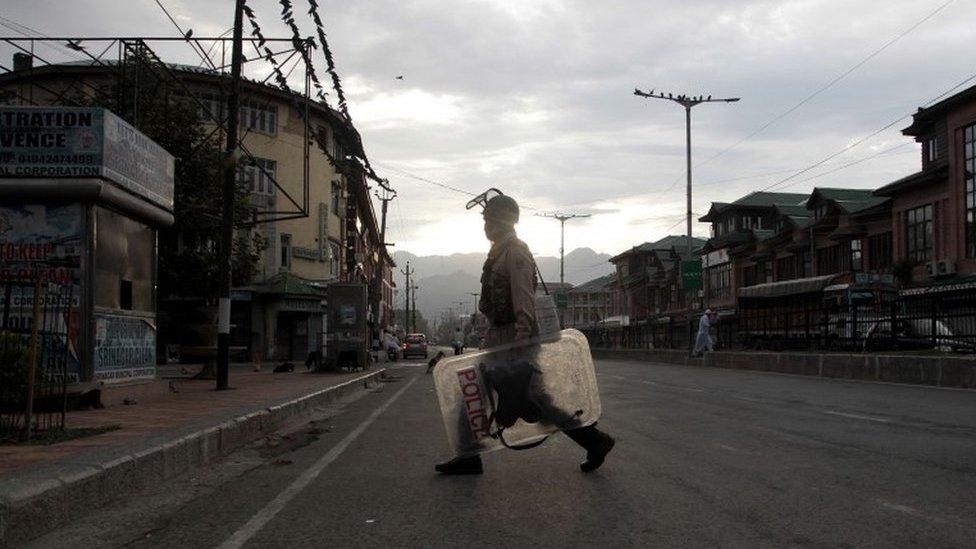
- Published14 July 2016
- Published15 August 2016
- Published11 July 2016

- Published19 July 2016
